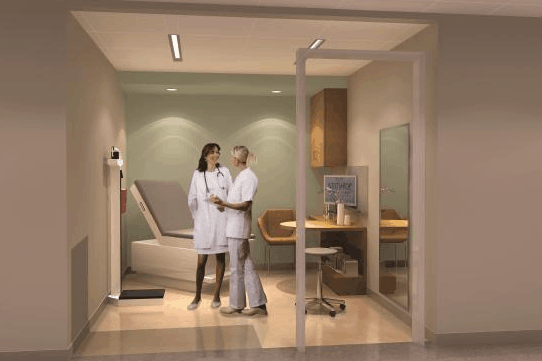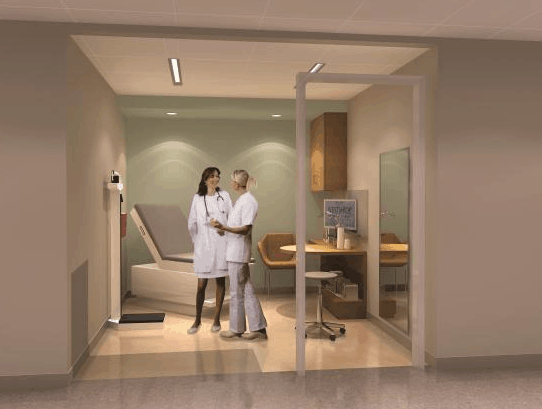Blog
How To Design A ‘Smart’ Hospital

The content for the following post was originally posted on HealthCareDesignMagazine.com. The full article may be seen here.
Healthcare architects and designers have a unique opportunity to unite architecture and technology by creating dynamic and engaging settings that cater to the individualized needs of patients and identifying opportunities for staff and administrators that broaden treatment options as well as where that treatment is provided.
To respond to a technologically driven environment of care and prepare for its evolution in the future, healthcare providers must consider bolstering the patient experience both inside their facilities and out through a keen focus on:
- connectivity
- communication
- access to information
Some design techniques that are accomplishing just that are:
Check-in kiosks
There’s often a bottleneck of patients created at central registration. To solve that challenge, patient kiosks can be implemented and offer the added advantage of introducing patients to digital connectivity. A patient kiosk offers a convenient, on-site method of interface that patients can use to access a self-service system.
Connective furniture
Today, many patients and family members sitting in waiting rooms use personal mobile devices for entertainment, to review and update personal health information, or to make payments and arrange future appointments. Institutions must accommodate this constant interaction via mobile technology—and find ways to utilize the connectivity to their advantage.
By enhancing waiting rooms with connective furniture—augmented with outlets for charging—and a robust Wi-Fi system, patients and their families can experience a new level of comfort and convenience not typically associated with healthcare facilities.
Hybrid exam/consult modules
As technology allows healthcare designers to add or expand options for diagnostic, clinical, and customer services, technology also allows the opportunity to rethink standard spaces to create a streamlined, optimized environment. For instance, careful planning can allow for flexibility between departments; the development of exam/consult modules can eliminate assigned, or physician-specified, rooms, creating overlap between different clinical spaces. This overlap allows the use of a digital scheduling system to flex between available rooms, thus optimizing usage and reducing wait times.
Future forward
The rapid advancement and pervasive influence of technology has created the opportunity to re-imagine the delivery of healthcare. As designers, we’re tasked with the challenge of integrating known technology that will enhance the patient experience in current time while strategizing future technological advancements and possibilities. Our insights, resourcefulness, and ability to visualize physical space with emerging technology will help shape the future patient experience and care model.









